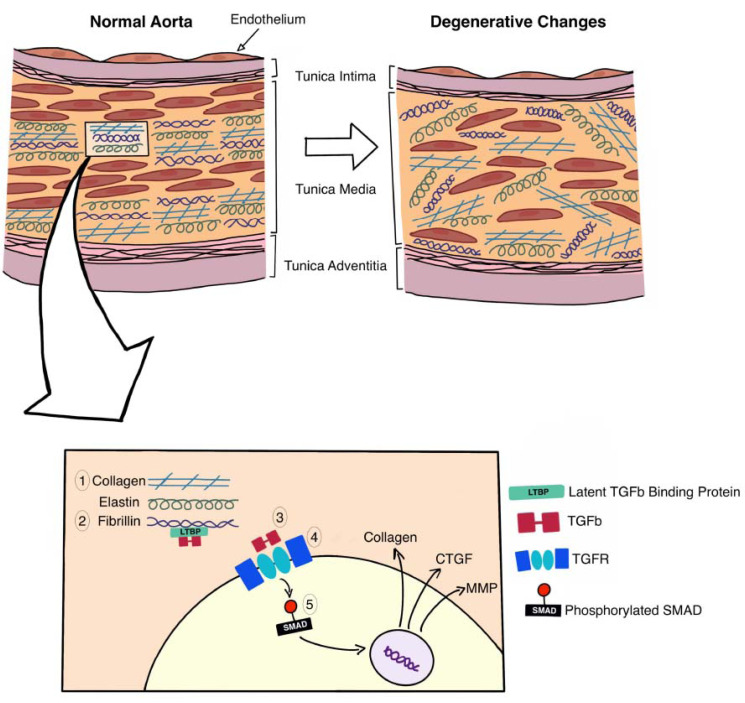Fig. (1).
Cross-section of the wall of the aorta, showing the role of various genes (associated with connective tissue disorders) in maintaining the integrity of the extracellular matrix. The wall of the aorta consists of three layers (intima, media, adventitia), genetic mutations associated with connective tissue disorders target the distorted remodeling of the aortic media, weakening the wall, thus leaving the patient susceptible to developing an aneurysm and/or dissection. The aortic media is composed of concentric layers of smooth muscle cells, within a dense Extracellular Matrix (ECM). The ECM consists of organized layers of elastin, fibrillin, and collagen, any derangement in the structure of these fibres leads to disorganization of the ECM and consequent weakening of the aorta. COL3A1 (1) encodes the alpha-1 procollagen chains, which are responsible for the formation of type III collagen, it is the gene defect found in Ehlers-Danlos type IV. The mutation responsible for this disease leads to an increase in the friability of the collagen molecules [47]. Fibrillin (2) is a structural protein which plays a major role in the sequestration and consequent regulation of the TGF-β (3) signaling pathway, the mutated form of fibrillin is found in Marfan Syndrome due to a mutation in the FBN1 gene [48]. The TGF-β signaling pathway plays a major role in connective tissue growth and maintenance of the ECM. TGF-β is released into the ECM as an inactive dimer bound to latent TGF-β binding protein (LTBP). In the ECM, the TGF-β/LTBP complex is sequestered by fibrillin; further interactions with other ECM components, e.g., integrins lead to the activation of the TGF-β. Once activated TGF-β binds to the heteromeric TGF-receptor complex (4), which then leads to the phosphorylation of SMAD proteins, a group of intracellular signal transducers [49]. The phosphorylated SMAD (5) are transported to the nucleus where they act as a transcription factor involved in the expression of proteins such as collagen, Connective Tissue Growth Factor (CTGF) [50], and matrix metalloproteinase (MMP) [51, 52]. (A higher resolution / colour version of this figure is available in the electronic copy of the article).

